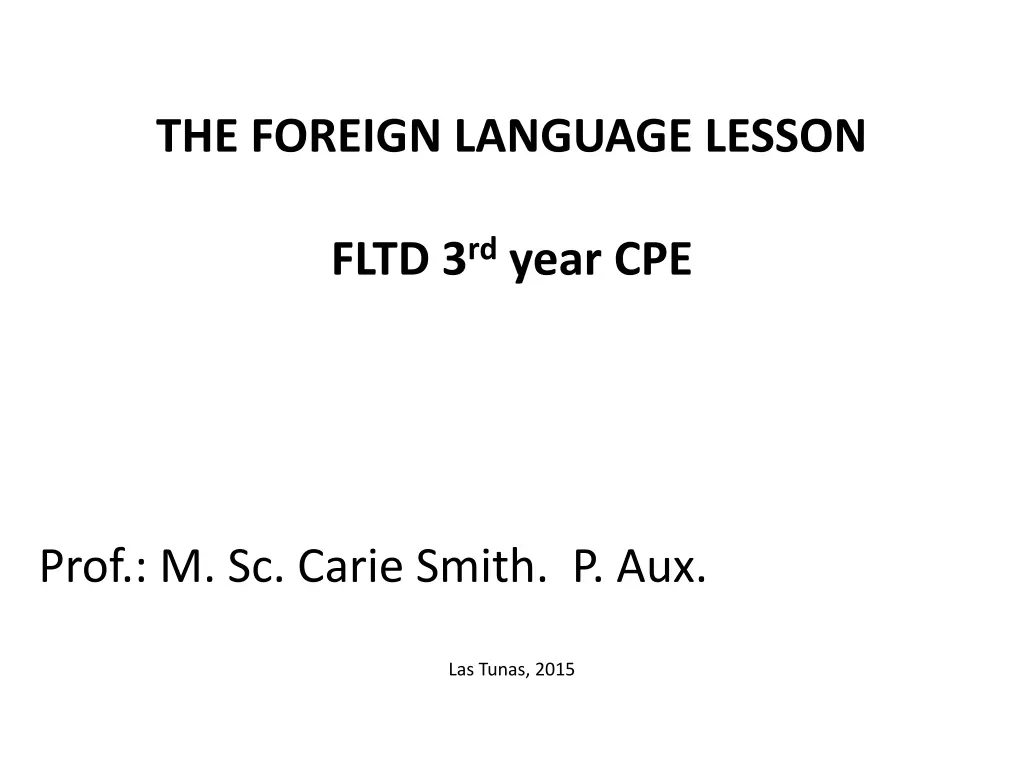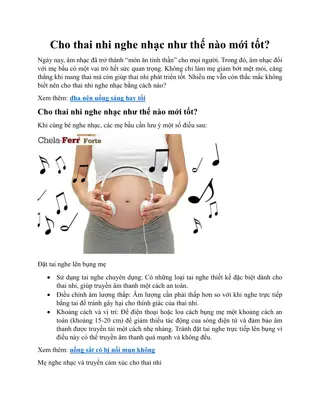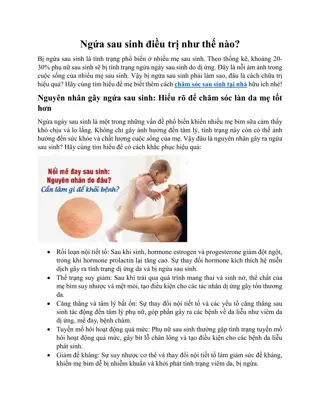
Effective Lesson Planning for Language Teachers
Learn about the importance of lesson planning in language teaching, including key components, benefits, and tips for successful implementation. Discover how to create engaging lessons that meet learners' needs and goals while maintaining structure and coherence throughout the teaching process.
Uploaded on | 2 Views
Download Presentation

Please find below an Image/Link to download the presentation.
The content on the website is provided AS IS for your information and personal use only. It may not be sold, licensed, or shared on other websites without obtaining consent from the author. If you encounter any issues during the download, it is possible that the publisher has removed the file from their server.
You are allowed to download the files provided on this website for personal or commercial use, subject to the condition that they are used lawfully. All files are the property of their respective owners.
The content on the website is provided AS IS for your information and personal use only. It may not be sold, licensed, or shared on other websites without obtaining consent from the author.
E N D
Presentation Transcript
THE FOREIGN LANGUAGE LESSON FLTD 3rdyear CPE Prof.: M. Sc. Carie Smith. P. Aux. Las Tunas, 2015
A lesson plan is a set of notes that helps us to think through what we are going to teach and how we are going to teach it. It also guides us during and after the lesson. We can identify the most important components of a lesson plan by thinking carefully about what we want our learners to do and how we want them to do it. The main components of a lesson plan show us what the lesson is for (the aims) and what the teacher and the learners will do during the lesson and how they will do it (the procedures). Other components help us to think about possible problems and remind us of things we need to remember about the learners. So a lesson plan is most like a road map or a series of road signs, i.e. something that shows us where we are going and how we are going to get there although we may sometimes find that during the journey we have to take a different route!
Some ways a lesson plan helps the teacher Before the Writing down the aims and the procedures for each stage of the lesson lesson helps us to make sure that we have planned the best possible sequence to enable us to achieve those aims During the The plan can also help the teacher to check timing - the amount of lesson time we plan for each stage - and to check that the lesson is following the sequence we decided on. After the We can keep the plan as a record of what happened, making any lesson changes necessary to show how the lesson was different from the plan. We can then use the plan and notes to help plan the next lesson. (At this stage, the plan may be more like a photograph, a story or a summary, giving us a record of the lesson.)
We also need to think about the connections between the aims of the lesson and the procedures we will use to achieve those aims. The available materials, the length of the lesson and the information we have about our learners will all help us to identify possible procedures. But the most important thing is to make sure that the materials, tasks and activities we select are the ones that will help a particular group of learners to achieve the aim we have identified. A sequence of lessons is a number of related lessons that develop language knowledge and/or language skills over a period of time. Sequences may develop a single topic or language area, or may involve topics or language areas that are very closely connected.
KEY CONCEPTS Planning an individual lesson When we plan an individual lesson, we have to ask ourselves a number of questions: Will the topic be interesting and motivating for my learners? Are the activities and teaching materials at the right level for all the learners? Have I planned enough for the time available? Do I need any extra material? Have I planned too much for the time available? Are there any stages I can cut if necessary? Have I thought about exactly how to start and end the lesson? Does each step in the lesson help to achieve the aim?
Reference resources are all the sources of information about language and about teaching that we can refer to for help in lesson preparation. They include reference materials, such as dictionaries and grammar books, books and articles about methodology in teachers' magazines, the teacher's book accompanying a coursebook that contains answers and teaching ideas, and websites on the Internet. Reference resources may also include people, for example, the Head of Department or colleagues who teach foreign languages or other subjects. We consult reference resources by knowing where we can find the information we need and how to find it.
Anticipating learners' difficulties Reference materials about learners' errors can help us anticipate particular language problems that our learners might have. vocabulary or grammar interference from L1. Books or articles about specific differences between the learner's L1 and English can help to explain these problems. Many difficulties the with are result of
Aids are the resources and equipment available to us in the classroom, as well as the resources we can bring into the classroom. They include cassette recorders, CD players, video recorders and overhead projectors (i.e. equipment with a light in it that can make images appear larger on a screen), visual aids (pictures that can help learners understand), realia and the teacher himself/herself! We select and use aids by thinking carefully about the main aims and the subsidiary aims of the lesson, and then choosing the most appropriate ones.
All of these aids can be used for many different purposes. Some examples of these purposes are:
All of these aids can be used for many different purposes. Some examples of these purposes are:
All of these aids can be used for many different purposes. Some examples of these purposes are:
Other aids are: realia, flashcards (cards small enough to hold up one after another with simple drawings or single words or phrases on them), puppets (models of people or animals that you can move by putting your hand inside them), charts (diagrams that show information) and the teacher. What different uses can you think of for these aids? Here are some of the most important uses:
Real objects that we can easily bring into the classroom can be used to teach vocabulary, as prompts for practicing grammatical structures or for building dialogues and narratives, for games and quizzes. Realia also include real texts, such as menus, timetables, leaflets, etc.
Puppets are an excellent resource for teaching young learners. For example, we can introduce new language in dialogues between pairs of puppets (or between one puppet and the teacher). Children can also make their own simple puppets.
We can use posters and wallcharts (drawings or graphs that can be put on the wall of a classroom) to display larger, more detailed pictures, or a series of pictures telling a story or showing related objects in a lexical set. A phonemic chart shows the phonemic symbols and the positions in the mouth where the different sounds are made. The teacher can point at the symbols to prompt learners to correct their pronunciation. We can also use charts to display diagrams, prepared drawings and tables of irregular verbs, or to build up a class dictionary.
The teacher can use hand gestures, facial expressions and mime (actions which express meaning without words) to elicit vocabulary items, clarify meaning and create contexts. We can also build up a set of signals, such as finger correction, which learners prompts to correct their own mistakes. recognize as
Aids that you can prepare in advance, like charts, flashcards and transparencies for the overhead projector, will help you to make sure that lesson procedures match your aims. Another advantage is that you can save such aids and reuse them in future lessons. Make sure that you check any equipment before the lesson. Use the counters on cassette recorders and video recorders to make a note of where recordings begin, so that you can find the place easily when you rewind. If you use computers or the language laboratory, advance preparation is essential. You need to plan all your instructions very carefully, as well as the sequence of activities for the lesson.
A scheme of work helps us plan a sequence of lessons in the best way to cover the school syllabus or the units of a coursebook in the time available. It also helps us to think about what we want to achieve and what materials we might need. It also helps us to include enough variety across our lessons. Teacher and learners need clear aims beyond the single lesson and need to see how lessons are linked to each other. Here are some of the main advantages and disadvantages of three schemes of work:
We also need to think about the connections between the aims of the lesson and the procedures we will use to achieve those aims. The available materials, the length of the lesson and the information we have about our learners will all help us to identify possible procedures. But the most important thing is to make sure that the materials, tasks and activities we select are the ones that will help a particular group of learners to achieve the aim we have identified.






















